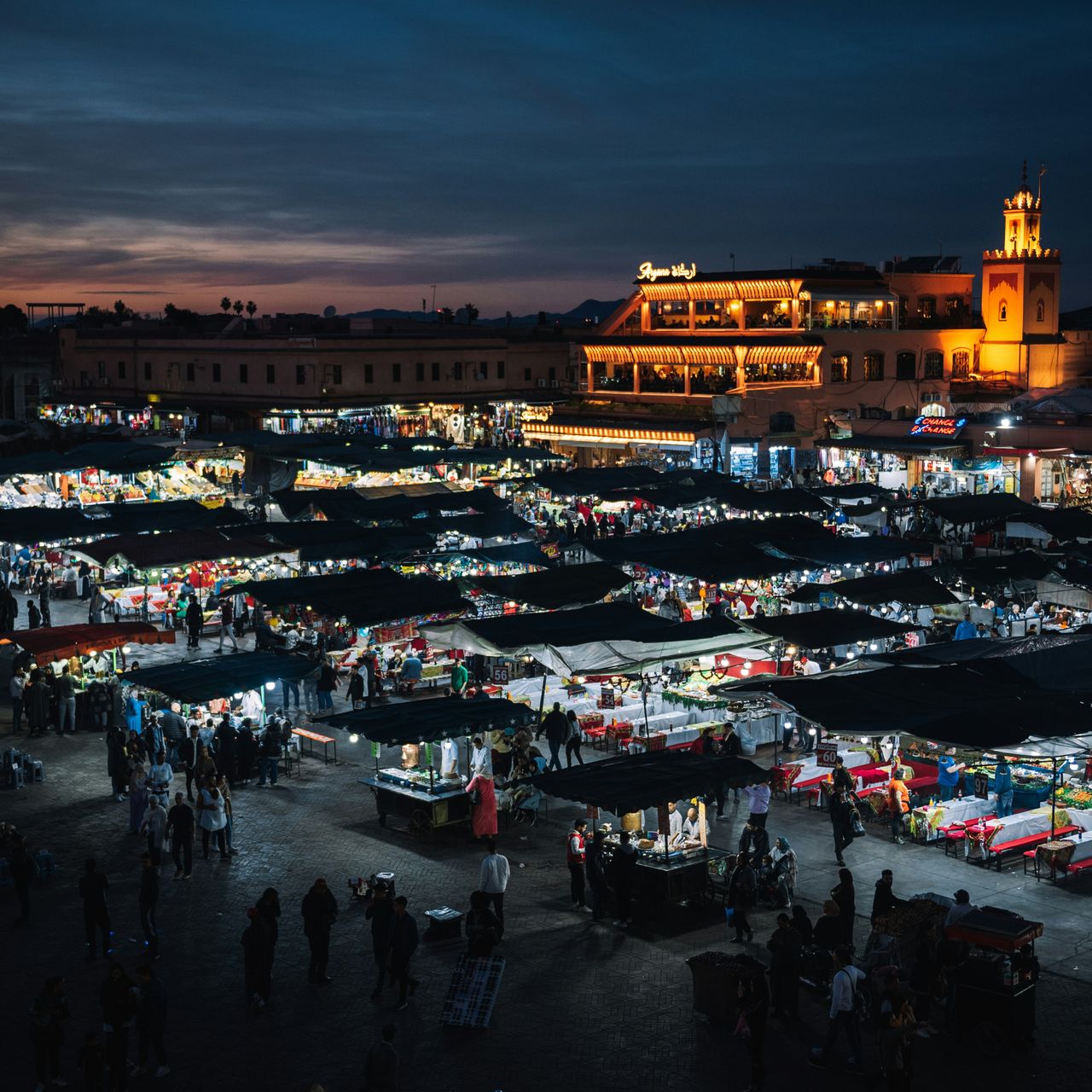Fresh fruit juice stalls
The colorful stands offering freshly squeezed orange juice are a must-visit in the square. This relatively recent tradition, dating back to the mid-20th century, quickly became a symbol of local cuisine. Citrus fruits, cultivated in the region since the Arab-Andalusian era, have become emblems of Moroccan freshness and hospitality.

Traditional music players
The captivating melodies of Gnawa musicians echo around the square, creating a unique atmosphere. Inheritors of a musical tradition from sub-Saharan African slaves, these artists continue an ancient repertoire blending African rhythms with Arab influences. Their presence on Jemaa el Fna dates back to the 16th century when Marrakesh was a major cultural crossroads.

Bird sellers
Sellers with their colorful cages add a touch of poetry to the square's atmosphere. This practice, dating back to when birds were used for hunting or as messengers, has become a pet trade. Today, it raises ethical questions but remains embedded in the traditions of Jemaa el Fna.

Storytellers
The halqa, these circles formed around storytellers, are the soul of the square. These masters of speech perpetuate a millennial oral tradition, narrating folk tales, legends, and epic stories. Their art, threatened by modernity, remains a pillar of Moroccan cultural heritage and contributes to preserving the collective memory.

Acrobatic performances
Acrobats and entertainers enliven the square with their spectacular performances. Heirs of Berber and Arab traditions, these artists perpetuate ancient techniques passed down through generations. Their acts, combining strength, agility, and balance, showcase the richness of Moroccan cultural heritage.

Fishing game stalls
Surprisingly popular in a desert city, the fishing game is a hit at the square. This fun activity, which appeared in the 1960s, offers children the chance to win small prizes by catching plastic bottles. It illustrates the adaptability and innovation of Jemaa el Fna's vendors in response to societal changes.

Snail vendors
The snail stalls, known as "babouches" in Moroccan dialect, are a popular local specialty. This culinary tradition, inherited from Berber influence, developed in the square in the early 20th century. Snails, considered a delicacy with medicinal properties, are prepared using age-old recipes passed down through generations.

Street food vendors
When the sun sets, the square transforms into an open-air restaurant. Food stalls, assembled and disassembled daily, offer a variety of traditional dishes. This practice dates back to when Jemaa el Fna was a stopping place for caravans, providing travelers a warm meal before resuming their journey.

Snake charmers
Snake charmers have been an integral part of Jemaa el Fna for generations. Sitting cross-legged, they skillfully handle cobras to the hypnotic sound of their flute. This practice dates back to when the square served as a gathering place for desert caravans, attracting itinerant artists from across North Africa.

Vendors of dried fruits and pastries
Stalls brimming with dried fruits, spices, and traditional pastries are a feast for the eyes and taste buds. This commercial tradition dates back to when Marrakech was a major stop on caravan routes. The products offered, often from surrounding regions, reflect Morocco's geographical and cultural diversity.

